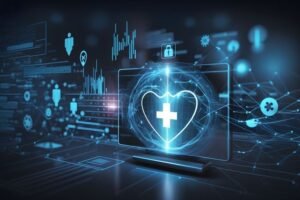Healthcare Information Technology
Healthcare Information Technology: Transforming Patient Care
Healthcare Information Technology (Healthcare IT) has revolutionized the healthcare industry, enhancing efficiency, improving patient outcomes, and transforming the delivery of medical services. This article delves into the essential aspects, benefits, challenges, and future prospects of Healthcare IT.
Table of Contents
1. **Introduction to Healthcare Information Technology**
2. **Benefits of Healthcare Information Technology**
– Enhanced patient care and safety
– Improved efficiency and productivity
– Better patient engagement and satisfaction
– Advanced data analytics for decision-making
3. **Challenges of Healthcare Information Technology**
– Initial implementation costs
– Data privacy and security concerns
– Integration and interoperability issues
4. **Future Trends in Healthcare Information Technology**
– Telemedicine and remote patient monitoring
– Artificial Intelligence and machine learning in diagnostics
– Blockchain for secure health data exchange
5. **Conclusion**
6. **FAQs about Healthcare Information Technology**
7. **References**
### Introduction to Healthcare Information Technology
Healthcare Information Technology encompasses a wide range of technologies designed to manage and exchange health information electronically. It includes electronic health records (EHRs), telemedicine platforms, health information exchanges (HIEs), and mobile health applications, all aimed at improving patient care delivery.
### Benefits of Healthcare Information Technology
#### Enhanced Patient Care and Safety
Healthcare IT systems facilitate accurate and timely access to patient information, ensuring healthcare providers have comprehensive insights into medical histories, allergies, and treatment plans. This improves diagnostic accuracy and reduces medical errors.
#### Improved Efficiency and Productivity
Automation of administrative tasks, such as appointment scheduling and billing, streamlines workflows in healthcare settings. This efficiency allows medical professionals to spend more time on patient care rather than paperwork.
#### Better Patient Engagement and Satisfaction
Patient portals and mobile apps empower patients to access their health records, communicate with healthcare providers, and actively participate in their own care. This enhances patient engagement and satisfaction by fostering transparency and communication.
#### Advanced Data Analytics for Decision-Making
Big data analytics and predictive modeling enable healthcare organizations to derive valuable insights from large volumes of patient data. This data-driven approach supports evidence-based decision-making, personalized medicine, and population health management.
### Challenges of Healthcare Information Technology
#### Initial Implementation Costs
The upfront costs of adopting and implementing Healthcare IT systems can be significant, especially for smaller healthcare practices. Investments in hardware, software, and staff training may pose financial challenges initially.
#### Data Privacy and Security Concerns
Protecting sensitive patient information from cyber threats and unauthorized access is a critical concern in Healthcare IT. Healthcare organizations must implement robust security measures and comply with regulations like HIPAA to safeguard patient data.
#### Integration and Interoperability Issues
Ensuring seamless integration and interoperability between different IT systems and healthcare providers remains a challenge. Compatibility issues can hinder the exchange of patient information across healthcare networks and between different EHR platforms.
### Future Trends in Healthcare Information Technology
#### Telemedicine and Remote Patient Monitoring
The adoption of telemedicine technologies and remote patient monitoring solutions is expected to continue growing. These technologies enable healthcare providers to deliver care remotely, monitor chronic conditions, and reach underserved populations.
#### Artificial Intelligence and Machine Learning in Diagnostics
AI-powered algorithms have the potential to revolutionize medical diagnostics by analyzing complex data sets, identifying patterns, and predicting patient outcomes. This technology can assist clinicians in making faster and more accurate diagnoses.
#### Blockchain for Secure Health Data Exchange
Blockchain technology offers a decentralized and secure method for managing health data, ensuring transparency, integrity, and interoperability across healthcare systems. It has the potential to enhance data security and streamline healthcare transactions.
### Conclusion
Healthcare Information Technology is transforming the delivery of healthcare services by improving patient care, enhancing efficiency, and enabling advanced data-driven decision-making. While challenges such as implementation costs, data security, and interoperability persist, the future of Healthcare IT looks promising with innovations in telemedicine, AI, and blockchain.
### FAQs about Healthcare Information Technology
1. **What is Healthcare Information Technology (Healthcare IT)?**
Healthcare IT refers to the use of technology to manage and exchange health information in electronic form, aiming to improve patient care delivery and efficiency.
2. **How does Healthcare Information Technology benefit patients?**
It improves patient care and safety, enhances efficiency in healthcare delivery, promotes better patient engagement, and supports data-driven decision-making by healthcare providers.
3. **What are the challenges of implementing Healthcare Information Technology?**
Challenges include high initial costs, concerns over data privacy and security, and the need for seamless integration and interoperability between different IT systems.
### References
– [HealthIT.gov](https://www.healthit.gov/)
– [Journal of Medical Internet Research](https://www.jmir.org/)
– [American Medical Informatics Association](https://www.amia.org/)
This article provides valuable insights into Healthcare Information Technology, highlighting its benefits, challenges, future trends, and the transformative impact on healthcare delivery.












Post Comment